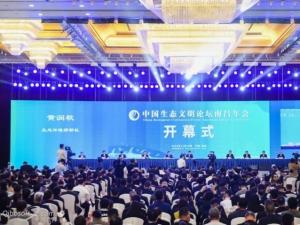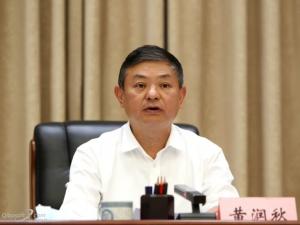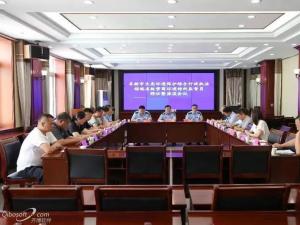Studies on Japan’s Trading System of GHS Emission Rights
Leng Luosheng
(LawSchool, BeijingNormalUniversity, Beijing, 100875)
Abstract:Law concerning the promotion of the measures to cope with Global Warming was effective on October 9th 1998 which was Japan’s first special law on Global Climate Change. In order to achieve the binding targets set by Kyoto Protocol for reducing greenhouse gas (GHG) emissions and make experience of trading GHG emission rights gained by domestic enterprise, the Japanese government provides subsidies to encourage companies to participate in trading GHG emission rights voluntarily. Instead of Command-and-Control, Japan adopts the mode of administrative guidance, instruction-persuasion and trading system of GHG emission rights emphasis of voluntary participation and subsidies, which effectively reduces regulatory cost needed in the system. Currently China is under no obligation of reducing GHG emissions. However, our government declares voluntary mitigation actions before Copenhagen Summit. In this case, Flexible legislative exemplification of Japan is worth learning.
Key words: Global Climate Change, Kyoto Protocol, Trading of GHG Emission Rights, Flexible Legislation.
Japan has formulated laws positively in response to the pressure of reduction caused by global climate change and the "Kyoto Protocol". “Law of Global Warming Countermeasures Promotion” was effective on October 9th 1998 which was Japan’s first special law on Global Climate Change. A small-scale of Voluntary participation in Trading System of GHG Emission Rights has been tried in domestic since April 1, 2005. The implementation of the first to the third stage proposed by this system has been ended untill September 2009. A large-scale participation in Trading System of GHG Emission Rights among enterprises has been tried since October 2008. March 12, 2010, the Japanese cabinet approved the " Basic Act of Global Warming Countermeasures, which including the specific policies of global warming countermeasures such as reduction targets of long-term greenhouse gas emission and building of Chinese’s Voluntary Emissions Trading Scheme.
I、The establishment and improvement of Japan’s Voluntary Emissions Trading Scheme(JVETS)
(1)The establishment of JVETS
(2) The improvement of JVETS
Since april 1, 2005, Voluntary participation in Trading System of GHG Emission Rights has been implmented in five stages. The first stage(2005~2007 )、the second stage(2006~2008 )、 and the third stage(2007 ~ 2009)have been ended in september 2007, 2008 and 2009. Now the fourth stage (2008 ~ 2010)and the fifth stage(2009 ~ 2011)are being implemented .
July 29, 2008, adopted the " Action Plan for Building Low-carbon Society".
October 21, 2008, adopted the "The decision of pilot implementation of a unified domestic market of Trading of GHG Emission Rights”.
March 12, 2010, the Japanese cabinet approved the "Basic Act of Global Warming Countermeasures ".
May 18, the House of Representatives adopted the "Basic Act of Global Warming Countermeasures".
II、 The Main Content of JVETS
A、 Participants and the ways of participation
(1) Participants committed to the A target of emission reduction
(2) Participants committed to the B target of emission reduction
(3) Participants committed to the C target of emission reduction
(4) Transaction Participants
B、 The Setting of the Emission Reduction Targets and the Allocation of Greenhouse Gas Emissions
(1) The setting of the emission reduction targets
(2) The allocation of quotas
(3) The restrictions on retain commtiment
(4) Trading ways, registration and transference
(5) Storage and borrowing of quotas
(6) Comply with recognization
(7) Returned subsidies and the list of public enterprises
III、 The Implementing Effects and Evaluation of JVETS
A、 Implementing Effects
In the first stage, there are 13 companies implementated annual emissions reduction have been over the initial distribution volume, totally 16,896 tCO2 more than emissions, which are all dependent on the Trading of GHG Emission Rights, therefore, all the committed Participants promises have achieved the reduction targets in the first stage. In the second stage, there are 61 participants committed to emission reduction targets in the implementation of measures to reduce annual emissions for the 842,401 tCO2, cut CO2 emissions by 280,192 tCO2 since the base year, the annual reduction of 25% compared with baseline, significantly exceeded the predicted emission reductions volume of 217,167 t CO2, the annual reduction of 19% compared with baseline. In the third stage,the greenhouse gas emissions trading is 23, totally be 34,227 tCO2, , the average transaction price through the intermediary system of trading is 800 yen / tCO2.
B、 The Evaluation of JVETS
Japan's voluntary participation in Trading of GHG Emission Rights in comparison with the EU's trading system, it is extremely comfortable, not mandatory, and without any penalties on the enterprises failed to achieve emission reduction targets .The advantages of this trading system are as followed: the legal guarantee, nationwide system, high-level decision-making, government-led, unified planning, integrated resource,and the involvement of the people. However, there are also a number of unsatisfactory aspects of the system:
First, is not conducive to the improvement and development of emission technologies.
Second, it can not form an effective marke operation .
Third, the effect of the system is affected by the short pilot period .
Fourth, allocation method still impefect in scientific and rational characteristic.
Fifth, the flexibility of equipment subsidies proved insufficient.
IV、 Experience and Enlightenment
(1)To formate a unified and coordinated national senior decision-making body
(2) To formulate specific laws respond to greenhouse gas emissions
(3)To highlights the leading role of Government's policy on greenhouse gas emissions
(4)To encourage enterprises to innovate technologies of greenhouse gas emissions controlling
(5) To have a try in trading pilot of greenhouse gas emissions
Firstly, to build the spot market of Voluntary participation in Trading of GHG Emission Rights by learning from the experience of Japan; Secondly, to build the futures market of Voluntary participation in Trading of GHG Emission Rights by learning from the experience of the European Climate Exchange and the Chicago Climate Exchange.






